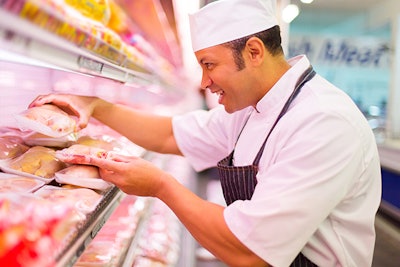
The COVID-19 global pandemic dramatically affected consumer behavior, shifting demand from foodservice to retail.
Vivek Sankaran, President and CEO, Albertsons Companies, shared his thoughts on the impact of COVID-19 on consumer trends during the Morgan Stanley Virtual Global Consumer & Retail Conference.
Albertsons Companies operates retail stores across 34 states and the District of Columbia under 20 well-known banners including Albertsons, Safeway, Vons, Jewel-Osco, Shaw's, Acme, Tom Thumb, Randalls, United Supermarkets, Pavilions, Star Market, Haggen and Carrs.
Food at home could be a lasting trend
Consumers are spending more time at home with remote work and school. This means that there has been a major shift to at home dining versus going out – and it could last long beyond the pandemic.
“What I like to remind people is that not a lot has to shift. If two lunches shift from eating out to dining in, that’s two out of twenty-one occasions of meals. That’s substantial,” Sankaran said. “Which is why I feel that this is a trend that is going to last.”
Higher store engagement
Because shoppers are committing to fewer trips to the store per week in order to minimize their risk of exposure to the virus, it means that they are purchasing larger basket sizes per visit and engaging more fully with the contents of the store. Meat and poultry sales, in particular, have skyrocketed during the pandemic.
“Customers who engage with us are engaged with more of our franchise. By this, they are shopping even more categories throughout the whole store,” he explained.
Upgrades to at home dining
Missing that dine-out experience, some consumers look to ways to upgrade the at home dining experience with premium food purchases in retail.
“People are cooking and eating more at home. They’re also buying better quality products,” said Sankaran. “I think you’ll find that people staying at home are looking for the stuff they might typically get at a restaurant.”
Ecommerce acceleration
Delivery and other forms of ecommerce were huge in 2020. Retailers had to instantly innovate to keep up with the demand, finding ways to create curbside pickup, drive up and go and delivery.
“I wish we had had more capacity coming into this pandemic. We were nowhere near where we needed to be to accommodate the amount of volume we had,” Sankaran noted. “We have massively expanded that capacity.”
Retail ‘merges’ with foodservice
Sankaran predicts that the lines between retail and foodservice will become blurred in the future, especially given the growth in ecommerce options.
“I think we’re going to get into the meals business so that we can have alternative solutions for customers. I think you’ll see more of the restaurant business and the supermarket business converging because frankly, when you order a meal and have it delivered at home, you don’t know or care where it is coming from,” Sankaran said.
View our continuing coverage of the novel coronavirus (COVID-19) pandemic.
Like what you just read? Sign up now for free to receive the Poultry Future Newsletter.


















